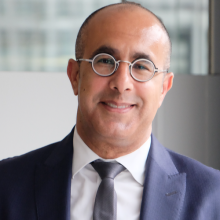
Blogs
Since 2013, the Government of Uttarakhand, with support from the World Bank and GFDRR, has helped the people of Uttarakhand, India, restore their homes, build better roads, and better manage future disaster risks.
At the One Planet summit, mayors from cities around the world, big and small, will take center stage to discuss how to mobilize the financing needed to accelerate climate action and meet the Paris Agreement goals.
During an All Saints’ Day mass in Lisbon in 1755, an 8.5-magnitude earthquake collapsed cathedrals, triggered a 20-foot tsunami, and sparked devastating fires that destroyed nearly 70% of the city’s 23,000 buildings. In the years to follow, careful studies of the event would give rise to modern seismology. But how is a disaster that occurred centuries ago still relevant today?
The Climate Vulnerability Assessment - Making Fiji Climate Resilient report measures the impact of climate change and includes a clear plan of action of how Fiji can strengthen climate resilience.
Unless we find effective ways to include the private sector in making urban infrastructure climate-resilient, the dream of a resilient future for our cities will remain elusive.
Ede Ijjasz-Vasquez, Senior Director of the World Bank’s Social, Urban, Rural and Resilience Global Practice, sits down with Dr. Shazia Siddiqi, Executive Director of Deaf Abused Women’s Network (DAWN) for a conversation on the disability dimension of inclusion and how we should conceive and design cities that are truly inclusive of all, including persons with disabilities.
While land size, borders, and coordinates are essential to providing secure land and property rights, we must remember that humans use and access land in three dimensions – whether through mineral or water rights beneath the surface or the addition of levels to a home or other property above the ground.
This fast-developing technology is great for disaster resilience in remote locations, such as the Pacific, and UAVs are currently being field tested in Fiji and Tonga.
The Roadmap for Safer Schools is a guide to design and implement systematic actions to improve the safety and resilience of school infrastructure at risk from natural hazards.
A new report on lays out a new, tailored approach to increasing disaster resilience in small island developing states. What makes resilient transport especially critical for SIDS are the large recovery costs, the dependency on infrastructure for which there is no redundancy, and the major role transport systems play in their economies.

 Hyunjee Oh
Hyunjee Oh
 Ede Ijjasz-Vasquez
Ede Ijjasz-Vasquez
 Sameh Wahba
Sameh Wahba
 David Sislen
David Sislen
 Alanna Simpson
Alanna Simpson
 Yann Kerblat
Yann Kerblat
 Katherine Baker
Katherine Baker
 Carina Lakovits
Carina Lakovits
 Shazia Siddiqi
Shazia Siddiqi
 Luis Triveno
Luis Triveno
 Tim Hanstad
Tim Hanstad
 Michael Bonte-Grapentin
Michael Bonte-Grapentin
 Keiko Saito
Keiko Saito
 Fernando Ramirez
Fernando Ramirez
 Vica Rosario Bogaerts
Vica Rosario Bogaerts
 Niels Holm-Nielsen
Niels Holm-Nielsen
 Franz Drees-Gross
Franz Drees-Gross